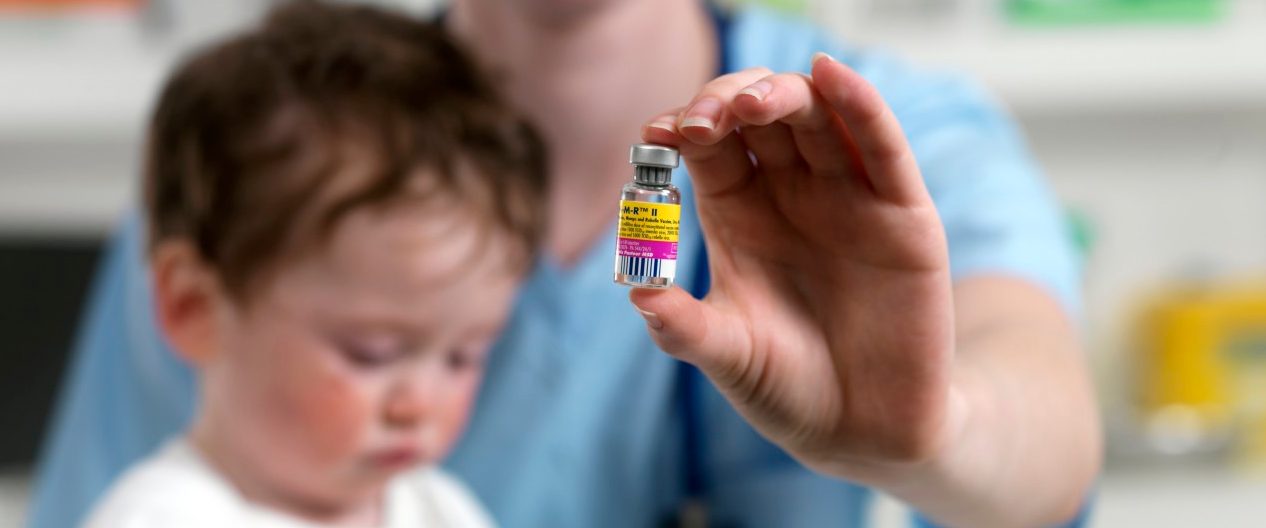What Everyone Should Know About Measles

Measles travels faster than the flu and may be the most contagious disease there is. You and your children will be safe if you get the vaccine.
Around the world since 2020, many measles vaccination campaigns were postponed because resources went instead toward fighting COVID-19. Millions of children missed their first dose, the World Health Organization reports.
Because measles is so contagious, at least 95 percent of the population must be vaccinated to prevent it from spreading. When outbreaks occur nearly anywhere in the world, travelers bring the disease elsewhere.
The United States had an outbreak in 2019, when almost 1,300 people from 31 states and the District of Columbia were reported to have come down with the virus, the largest number of cases seen since 1992. By the end of 2020, that number had fallen to 13 confirmed cases in 8 jurisdictions (which includes all 50 states and the District of Columbia). But in 2021, cases ticked up slightly to 49, in 5 jurisdictions.
YOU MIGHT ALSO LIKE: Childhood Immunization Schedule
Why is measles dangerous?
Measles travels faster than the flu and may be the most contagious disease there is. You can protect your children with two vaccine shots called “MMR,” which stands for measles, mumps, and rubella. Two shots are necessary because about 15 percent of children don’t develop immunity on after the first shot. The first dose is recommended at 12 to 15 months of age, the second before entering school at 4 to 6 years of age.
If you’re taking a child under a year old abroad, where the risk of measles may be greater, consult your child’s pediatrician. Children under age 5 are at greater risk for complications — including pneumonia, encephalitis, and death.
Parents who resist or delay vaccinating their children often say they fear a link to autism. A 1998 study, based on reports from parents of 8 children who appeared to show developmental problems after receiving the vaccine, was retracted in 2010. A meta-analysis of 1.3 million children in June 2014 showed no link between autism and vaccines or its components.
Why was there an outbreak in 2019?
American vaccination rates have been falling. Most states allow children to attend school without being vaccinated if the parents claim a religious (and in some states, a philosophical) objection. Check here for the rules in your state.
How does measles spread?
Measles remains contagious in the air or on infected surfaces for up to 2 hours. Once you catch it, you’re contagious for up to 4 days before the signature measles rash erupts. You don’t know you’re sick and go about your life, giving the virus plenty of time and opportunity to spread. In 2014, a smaller outbreak in the United States began with travelers returning from the Philippines.
According to the World Health Organization, the first symptom of measles is usually a high fever, which begins about 10 to 12 days after exposure to the virus and lasts 4 to 7 days. A runny nose, a cough, red and watery eyes, and small white spots inside the cheeks can appear, followed by a rash typically on the face and upper neck. The rash spreads over the next 3 days and fades after 5 or 6. People who have recovered from measles are immune.
Unlike other viruses that can be spread through contact with animals, measles lives only in humans. If immunization rates were boosted around the world, it wouldn't be able to find new victims and would eventually die.
Because the vast majority of Americans have received an effective vaccine, there have been fewer than 100 U.S. cases in most years since 2000, according to a Centers for Disease Control and Prevention report. In 1980, before measles vaccines became widespread, 2.6 million people died from the disease worldwide every year, the World Health Organization reports. By 2018, 86 percent of the world’s children had received a dose of the vaccine before their first birthday. The amount of deaths plunged. Vaccination prevented an estimated 23.2 million deaths between 2000 and 2018.
Americans who fear vaccines and put them off or oppose them for other reasons tend to live in clusters, which become particularly susceptible. In 2015, the magazine Wired did an investigation based on state data, analyzing vaccination rates at 12 day care centers affiliated with technology companies in the San Francisco Bay area. Six had vaccination rates below average — and below the level necessary to prevent the spread of the disease — though the data may have been out-of-date.
In the debate about stiffer laws, advocates point out that “anti-vaxxers” are threatening the health of their neighbors at significant cost.
One study analyzed an outbreak in San Diego in 2008, after an intentionally unvaccinated 7-year-old boy came home from Switzerland with an unrecognized infection. One child, the researchers concluded, exposed an estimated 839 people to the virus and led to 11 other cases in unvaccinated children. Forty-eight children too young to be vaccinated were quarantined. The estimated public cost came to $10,376 per case.
YOU MIGHT ALSO LIKE: Millennials May Not Be Immune from Measles
Updated:
May 02, 2022
Reviewed By:
Janet O’Dell, RN